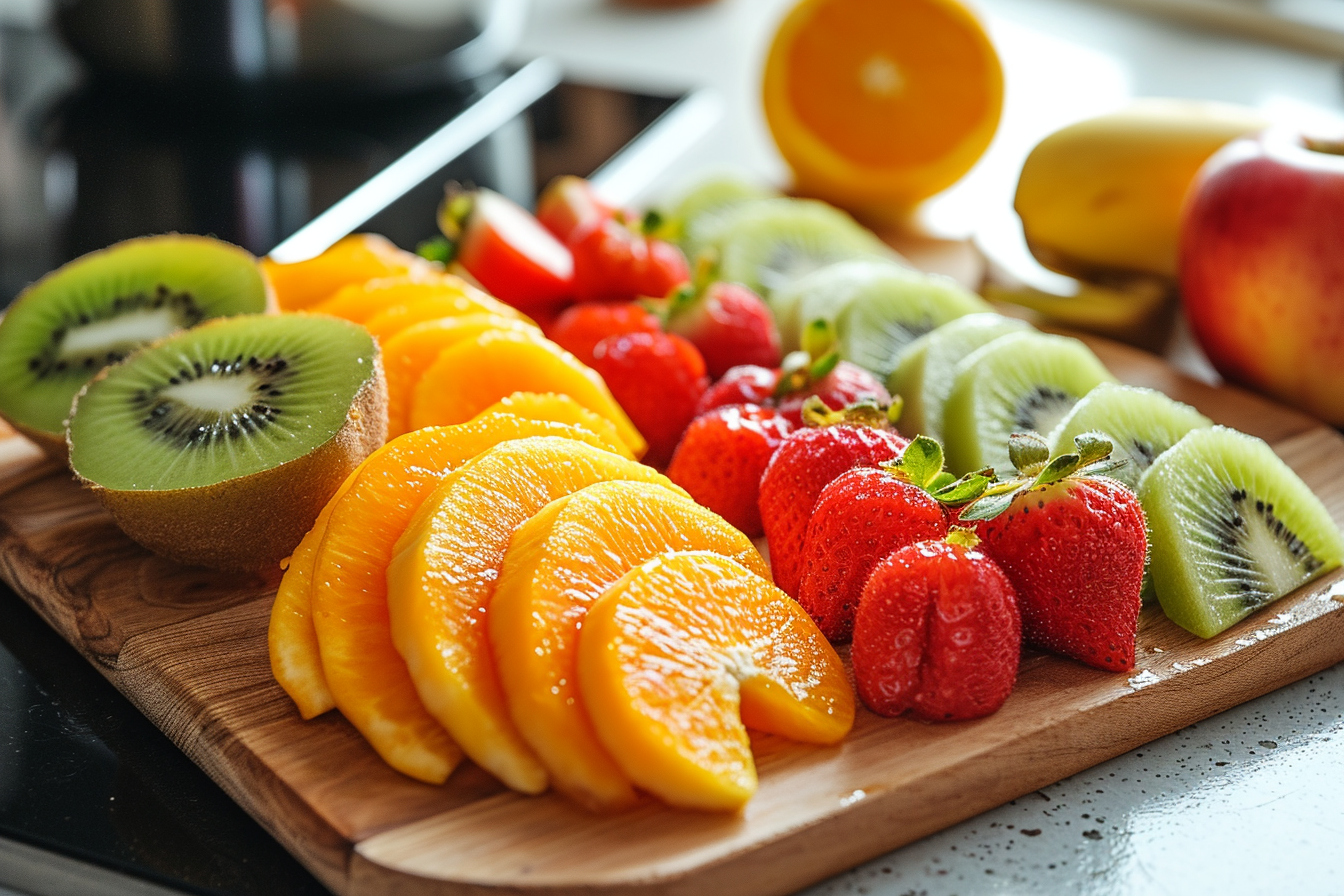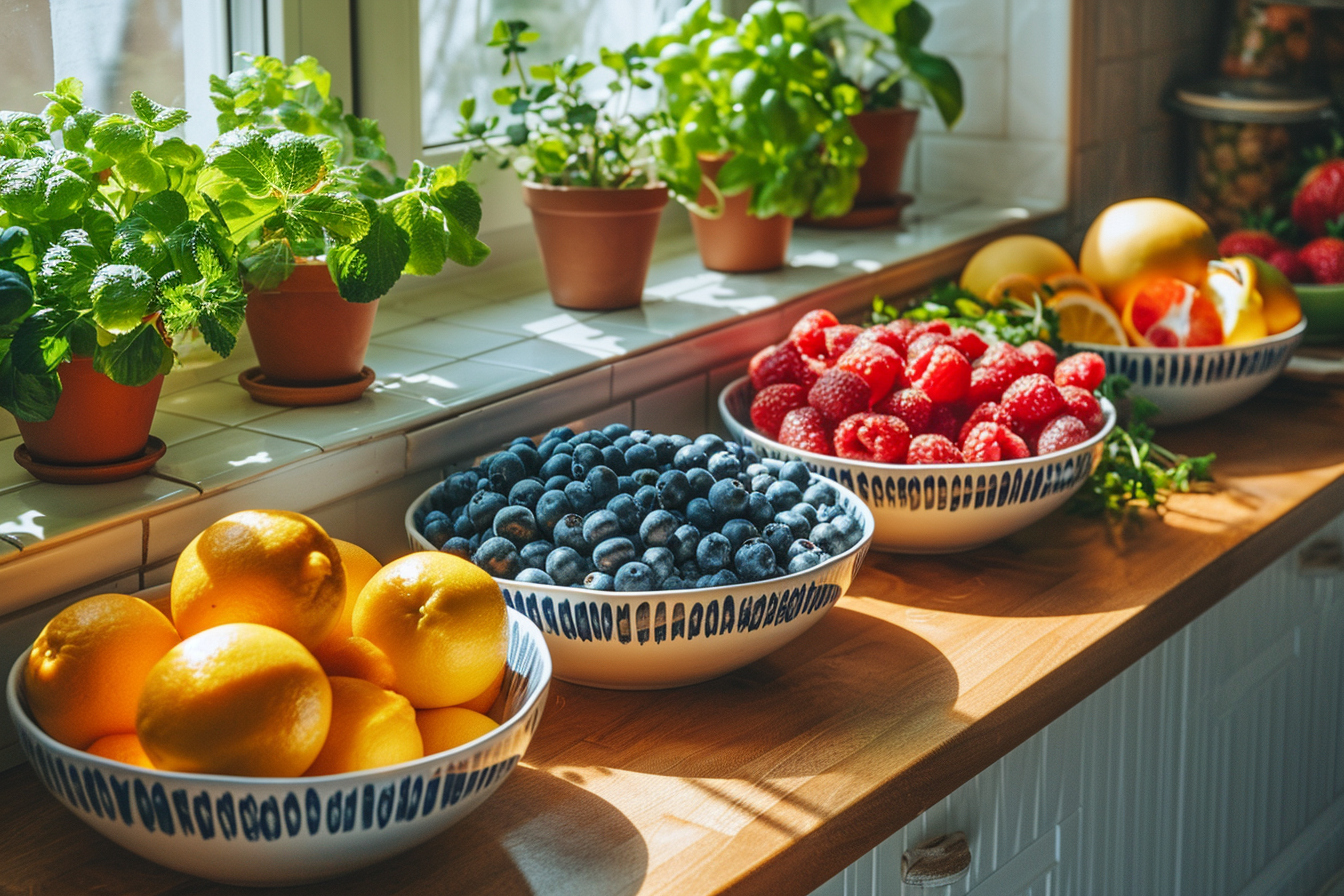The realm of vegan cooking is a vast and varied tapestry, rich with flavors, textures, and nutrients. Among the many ingredients that form the cornerstone of vegan culinary arts, fruits stand out for their versatility, natural sweetness, and vibrant colors. They have the power to transform dishes from mundane to extraordinary, imbuing them with freshness and depth. Mastering the techniques of vegan cooking with fruits goes beyond basic kitchen skills, it requires an understanding of the subtleties of fruit flavors, the best methods of preparation, and the creative ways to incorporate them into every meal.
Understanding fruit profiles in vegan cooking

Before delving into the myriad ways of preparing fruits, it’s essential to grasp the fundamental characteristics and flavor profiles of different fruits. Fruits can be broadly categorized by their taste and texture profiles: citrus, berries, tropical, stone fruits, and pomes. Each category brings unique elements to vegan dishes, and their successful integration relies heavily on the cook’s ability to balance sweetness, acidity, and texture.
Citrus fruits like oranges, lemons, and limes are known for their zesty tang and are often used to add a fresh burst of flavor or to cut through the richness of other ingredients. Berries, on the other hand, offer a combination of sweet and tart notes, perfect for desserts, dressings, or as a colorful garnish. Tropical fruits such as mangoes, pineapples, and papayas provide a sweet, succulent quality that can stand out in smoothies, stir-fries, and salads. Stone fruits, including peaches, plums, and cherries, have a tender flesh that can exude a mellow sweetness, making them ideal for grilling or baking. Lastly, pomes like apples and pears are versatile, with their firm texture and a balance of sweet and tangy flavors that work well in both raw and cooked dishes.
Selecting and preparing fruits for cooking
Selection of fresh fruits is a critical step in the process of vegan cooking. Optimal ripeness—not too unripe and not overripe—is key to ensure maximum flavor and texture. A ripe fruit emits a fragrant aroma and often gives slightly to gentle pressure, signaling it’s ready to be used.
Once selected, proper preparation of fruits is vital. Washing and cleaning fruits thoroughly removes any residues and impurities. Peeling or coring may be necessary depending on the recipe, but it’s also worth noting that many fruits’ peels contain valuable nutrients and fiber. Knowing when to leave the skin on is part of mastering vegan cooking with fruits.
Certain fruits, like apples and bananas, discolor quickly once sliced due to oxidation. To prevent browning, a splash of acidic juice such as lemon or pineapple can prove effective. This not only maintains the visual appeal but can also enhance the overall flavor profile of the dish.
Cooking techniques for fruits
The application of heat can transform fruits in several delightful ways. However, each method imparts different characteristics to the fruit, and understanding these is essential in vegan cooking.
grilling
Grilling fruit is a technique that brings out a smoky sweetness, perfect for summer barbecues. Firm fruits such as peaches, pineapples, and watermelon are exceptional candidates for grilling. The intense heat caramelizes their natural sugars, intensifying the flavor. It’s important to use a medium flame and to watch the fruits closely, as they can char quickly due to their high sugar content.
roasting
Roasting fruits in the oven is another method that enhances natural sugars through caramelization. Roasted fruits can be used in a multitude of ways; their concentrated sweetness and soft texture make them excellent for compotes, desserts, and even savory dishes. Pears and apples roasting alongside root vegetables, or a medley of stone fruits baked into a warm crumble are just a few examples of how roasting can add dimension to vegan meals.
sautéing
The advantage of sautéing fruits like bananas and apples is the rapid way in which they soften and release their juices. In a hot pan with a bit of oil or vegan butter, fruits become tender and flavorsome within minutes. The addition of spices such as cinnamon or vanilla can further elevate the taste, making for a quick and delicious topping for pancakes or oatmeal.
Boiling and poaching
For a more delicate approach, boiling and poaching fruits is ideal. Poaching pears or apricots in a light syrup infused with herbs or spices allows the fruit to absorb these flavors, producing a subtle and elegant dessert. It’s crucial to use a gentle simmer and to take care not to overcook the fruit, as it should retain some of its shape and texture.
dehydrating
Dehydrating is a preservation technique that offers a different avenue for vegan chefs. It involves removing moisture from fruits, concentrating their flavors, and creating a chewy texture. Dehydrated fruits make for an energy-dense snack, a crunchy salad topping, or a sweet element in nut mixes.
Fruit-Based sauces and dressings

Every accomplished vegan chef knows the importance of a good sauce or dressing. Fruits can star in these roles effortlessly, providing a base for sweet and savory concoctions that can dress salads, glaze proteins, or drizzle over desserts.
Berry coulis, mango salsas, and citrus vinaigrettes are classic examples of fruit-based sauces. The key to their success lies in balancing the fruit’s natural sweetness with acidic components like vinegar or citrus juice and complementing these with the right herbs or spices.
Baking with fruits
Baking is an arena where fruits truly shine in vegan cooking. Their ability to add moisture and natural sweetness allows for the reduction or elimination of added sugars and fats. The incorporation of fruits like apples, bananas, or pumpkin into cakes, muffins, and breads acts as a natural sweetener and also as a binding ingredient, which is crucial in the absence of eggs.
When baking with fruits, understanding how they react to heat and how they interact with other ingredients is paramount. Some fruits may release more moisture, requiring adjustments in the amounts of liquid ingredients used. Experimentation and practice are often the best teachers in achieving the perfect balance.
Raw fruit preparations
Not all fruits need to be cooked to elevate a vegan dish. Raw preparations preserve the maximum nutritional value of fruits and often provide a refreshing contrast to other components of a meal. Smoothies, fruit salads, and raw desserts capitalize on the natural flavors and textures of fresh fruits.
Presentation techniques
The visual aspect of vegan dishes is as important as taste. Slicing, dicing, or pureeing fruits can be turned into an art form, making them more appealing and improving the dining experience. Skillfully prepared fruit garnishes not only add color and vitality to a plate but also invite diners to appreciate the beauty of plant-based ingredients.
Innovative ways to incorporate fruits in vegan cooking
The exploration of fruits in vegan cuisine doesn’t end with traditional methods. Chefs and enthusiasts alike are constantly pushing boundaries, finding inventive ways to include fruits in their repertoires.
Flavor infusions
Infusing both savory and sweet dishes with fruit essences is a subtle way to introduce complexity. Steeping fruits in liquids or rubbing them onto tofu and tempeh can impart a unique character that’s distinct yet not overpowering.
Frozen treats
The creation of vegan frozen treats like sorbets, popsicles, and ice creams using fruit as the core ingredient is an ever-popular technique. These refreshments are a wholesome alternative to store-bought options and can be customized to suit any palate.
Snack innovations
Vegan protein bars, energy balls, and fruit leathers are increasingly popular as on-the-go snacks. These preparations showcase dried or pureed fruits as primary components, offering nutritional benefits as well as satisfying flavors and textures.
As the culinary landscape continues to evolve, so does the role of fruits in vegan cooking. The versatility and inherent appeal of fruits make them an indispensable part of a vegan chef’s toolkit. From the simple pleasure of a perfectly ripe peach to the complex layers of a fruit-infused sauce, the possibilities are endless.
In mastering the techniques of vegan cooking with fruits, one doesn’t just follow recipes but rather embarks on a journey of exploration, combining creativity with culinary skills. It’s about engaging all the senses, understanding the nuances of each fruit, and unlocking their potential to enliven and enrich the vegan diet.
The future of vegan cuisine with fruits is ripe for discovery, teeming with opportunities for innovation and refining the craft. The comprehensive approach detailed thus far scratches the surface of what fruits can offer. Aspiring and seasoned chefs alike can take these insights and continue to experiment, adapt, and invent new ways to celebrate the bounty of fruits in their vegan endeavors.
